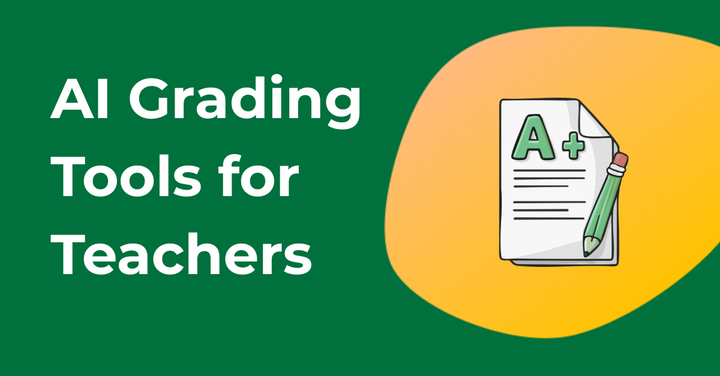What to Do if a Student Is Using AI: Strategies for Educators
Unsure how to handle student AI use? Here’s how teachers are approaching it, with empathetic questioning and consistent processes.
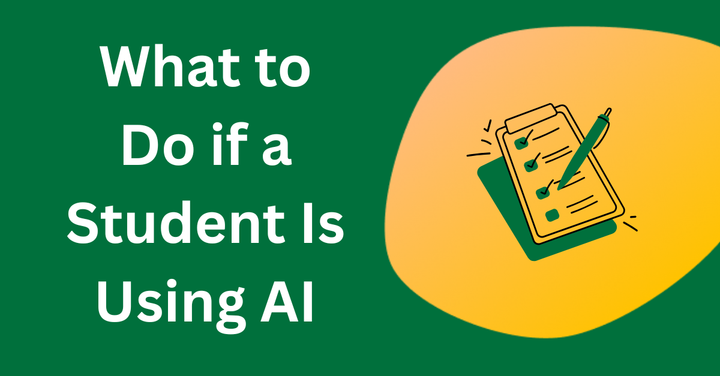
It’s a dilemma many educators are facing today: what to do if a student is using AI. As tools like ChatGPT become more popular, students using AI to write complete assignments are becoming more common. A survey of middle and high school teachers in the US showed that in the 2023-24 school year, 63% said students had been disciplined or flagged for using generative AI, up from 48% the year before.
Why are students using AI? Often it comes down to convenience, as tight deadlines and heavy workloads have made AI tools an easy shortcut or quick source of support. Some students use them to grammar-check their writing while others use them to bypass parts of the learning process. This can undermine the teaching of critical thinking and can threaten the foundation of academic integrity.
We spoke to teachers from the GPTZero community on how they’ve handled these moments, specifically, the top questions they ask and the strategies they use.
Identifying AI-generated work
Learning to spot AI-generated writing is becoming a necessary classroom skill, and the most effective approach blends observation and experience, as well as technology such as an AI detector. Educators in the GPTZero community agree that it’s rarely one single clue that reveals AI involvement, but a pattern of inconsistencies that emerges across the work.
Common Indicators of AI-Generated Work
Here are a few signs that can prompt further review:
- Inconsistent tone or fluency: The style suddenly shifts from one assignment to another, or within a single essay.
- Impersonal or generic language: The text sounds polished but lacks voice or emotional connection to the student’s experience.
- Overly formal phrasing: Sentences feel repetitive or unnaturally sophisticated for the student’s level.
- Shallow understanding: The work summarizes concepts accurately but avoids specific examples or nuanced insight.
- Invented details: References quotes or data points that don’t exist or are incorrectly formatted.
- Robotic structure: Predictable paragraph lengths and a formulaic rhythm that lacks spontaneity.
- Formatting inconsistencies: Changes in font, spacing, or alignment that suggest copy-and-paste use.
- High AI detection probability: A useful signal, although it should always be verified against the other indicators above.
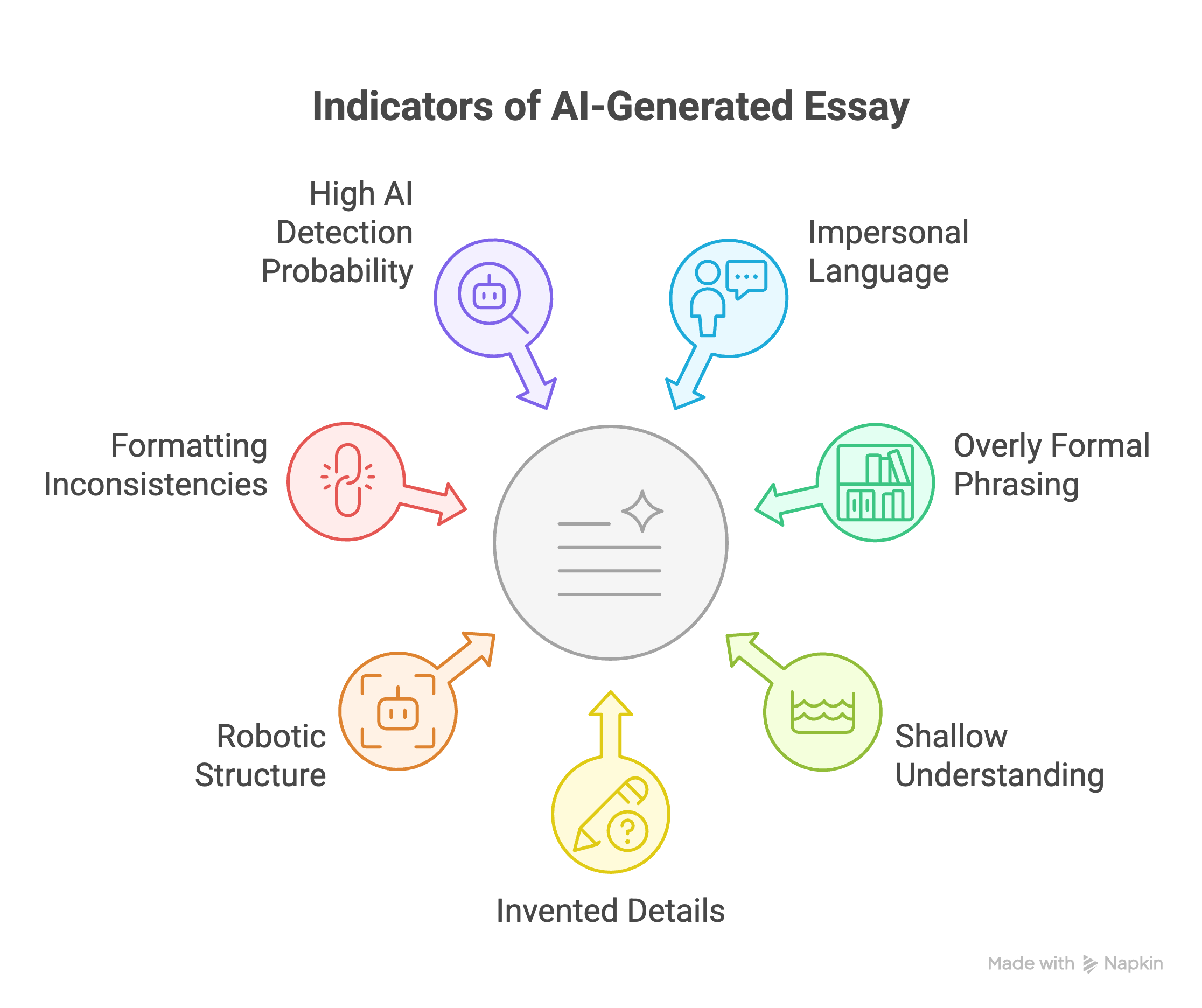
Recognizing the Varying Degrees of AI Use
AI use exists on a spectrum: while some students use it sparingly for things like a grammar check, others allow it to produce entire sections of an essay. The distinction matters, as does the intention behind the AI use. A fair response depends on identifying where along that spectrum a student’s work falls, taken within the context of what you know about their working style.
For Kimberly Munko, Adjunct Faculty at South College, the key is transparency: “If AI tools (e.g., Grammarly, ChatGPT) are used for grammar or editing, include a disclosure. Bottom line: I’m looking for originality.”
Reading AI Detector Reports Responsibly
AI detectors, such as GPTZero, are designed to analyze how language is formed and look at predictability and variation to estimate whether a passage is human or machine-written. When used responsibly, detectors can be fantastic supporting evidence, and help teachers decide when to take a closer look or start an open conversation with a student.
Weaknesses of AI Detectors
No AI detector is flawless. Accuracy can depend on text length and how much a student has edited the piece. Paraphrased or translated content can often escape detection, while short or formulaic responses may appear suspicious even when they’re genuine. The most reliable method remains triangulating the detector’s score with your own professional judgment and knowledge of the student’s usual writing style.
Options if You Suspect AI-Generated Work or When Students Use AI in Ways They Shouldn’t
So, if you’ve come across some student work that seems suspiciously likely to be AI-generated, what should happen next?
Top Questions to Ask When Talking to a Student Who Used AI
When a piece of work doesn’t sound like a student’s usual voice, the first step can be to confront them. Yet often, a better approach is leading with curiosity.
María Alejandra Cedeño González, Academic Tutor, explains how she starts these conversations when she suspects AI use:
- Can you explain how you developed this paragraph or argument? “I always try to understand their process, not just the final result, what really matters is the student’s own knowledge.”
- What sources or references did you consult for this part? “AI generated texts often lack specific or verifiable sources, or they sound robotic, missing the emotion and personal touch we bring when we write ourselves.”
- Why did you choose this example, topic, or way of expressing it? “A student who truly wrote their own work remembers their reasoning and choices. This is important because what truly matters is how much they’ve learned and understood, not just completing the task.”
These questions appear to be deceptively simple, but María’s experiences have shown that they work. They help teachers uncover how a student approached the assignment, as well as whether or not they used AI. Teachers can quickly tell if a student genuinely engaged with the topic or if they’re struggling to explain ideas that an algorithm produced for them.
Other ways of questioning that can be useful to try:
- Can you walk me through how you approached this assignment?
- What tools or resources did you use while working on this?
- Can you explain this paragraph or concept in your own words?
- Talk me through how you tackled this piece from start to finish. Which sections felt the strongest to you, and which ones were more difficult to put into your own words?
- Let’s take a look at your GPTZ Report side by side. We can review the flagged areas together and discuss how to adjust those sections so your unique writing style comes through more clearly.
- Thinking about your other subjects, what approaches or habits have helped you most with written work? How might we adapt those methods here to make this process feel more manageable?
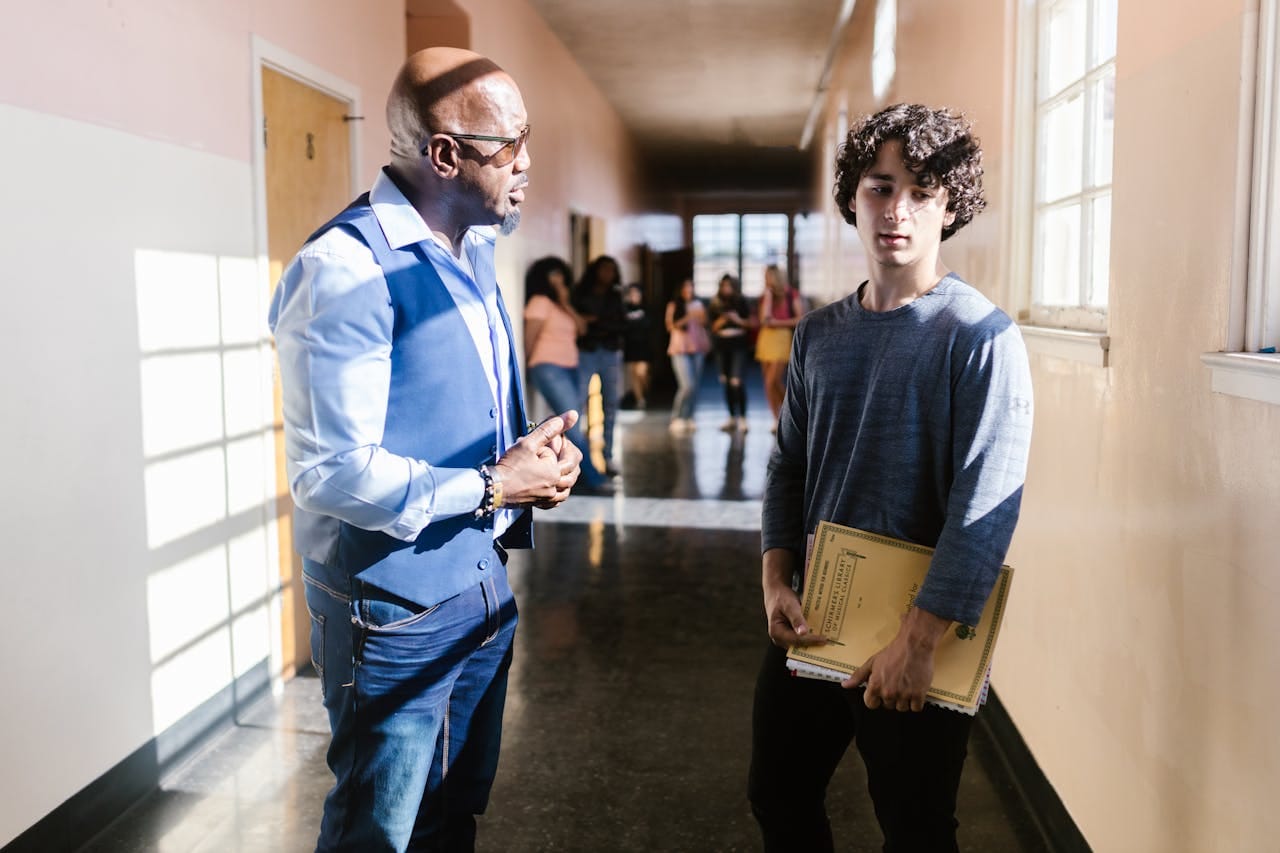
Process to Take
Once the initial conversation begins, the focus shifts to what to do next, and how to do it fairly. For Tracie Hernandez, English full-time faculty, the right approach depends on the extent of AI involvement: “It depends on how much of their paper shows AI generated. I also work closely with our student services and require them to complete a training before I accept their new paper.”
This flexible approach is built on understanding and accountability. Students who made small misjudgements can reflect and adjust, while those who leaned more heavily on AI are given a structured way to rebuild their work.
Tracie makes sure AI is discussed as part of learning itself: “Throughout the course, I reinforce that AI is a great tool to assist in their learning journey but it cannot replace it. I’ve created chatbots that they use during the revision process, but I do this in class.”
Her hands-on method turns AI into a teaching aid, meaning that students see where AI can help and where it can’t. She also uses a clever comparative exercise to deepen understanding: “I’ve also presented two papers on the same topic and I ask them to figure out which paper was written by the student. They are always correct, but then I ask them how do they know and they tell me. This opens up another conversation about the ethical uses of AI.”
María believes what matters most is tone and what tends to work is: “Focusing the conversation on learning, not punishment. Present it as an opportunity to discuss the writing process, the ethical use of AI, and the importance of knowing boundaries.” She also suggests “asking the student to expand or explain their ideas verbally, this easily reveals their level of understanding and helps us, as teachers, see their perspective.”
Step by Step: A Framework for Teachers
Every educator will have their own rhythm when addressing suspected AI use, but these steps, drawn from GPTZero’s teacher community, can guide your process.
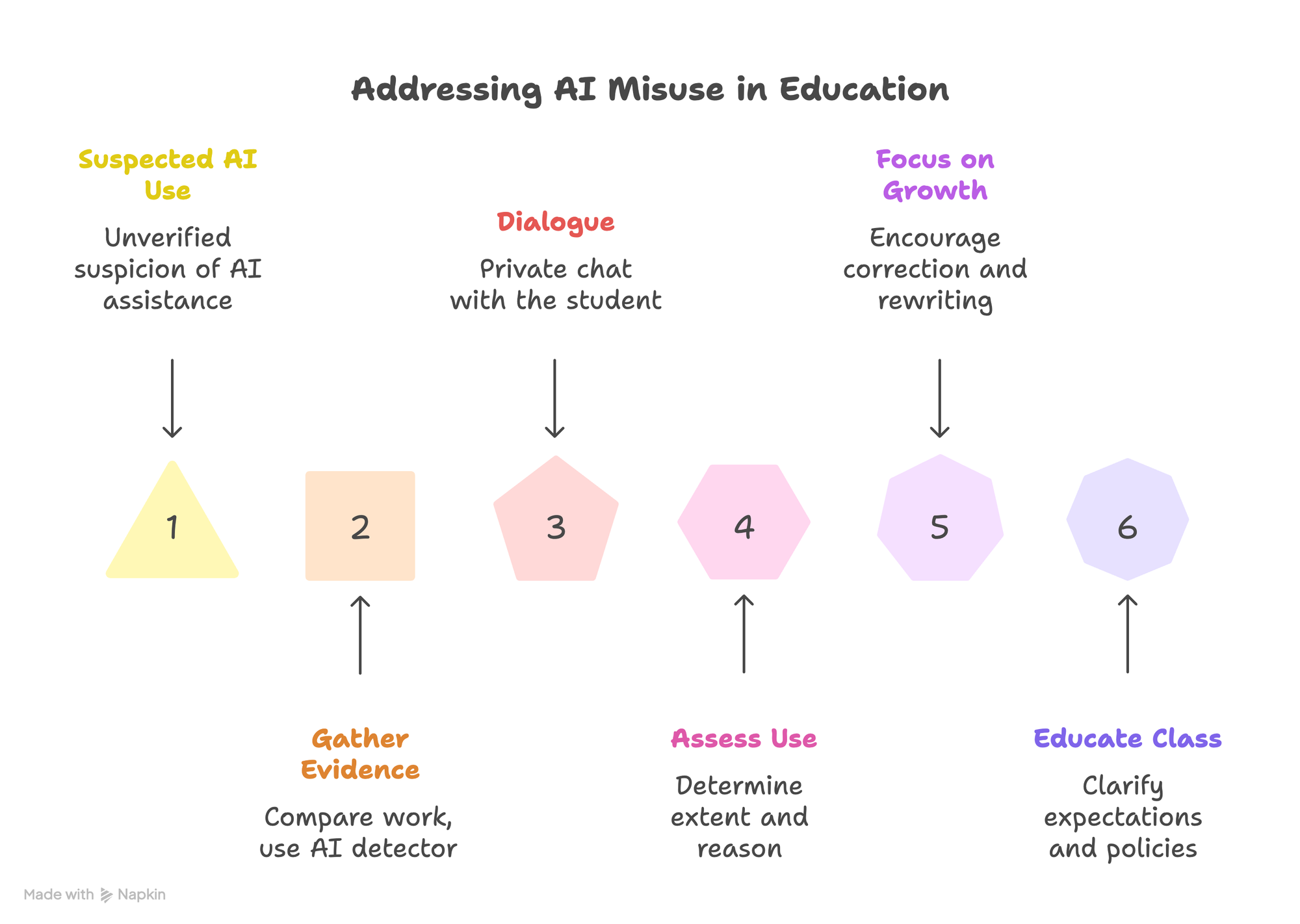
Step 1: Gather Evidence and Context
Start by comparing the suspected work to past assignments. Look for sudden changes in writing style or structure. Then, run it through a trusted AI detector such as GPTZero for an objective indicator, but never as the sole basis for action. As María reminds us, “Not everything is 100% verifiable.”
Step 2: Create Space for Dialogue
Arrange a private chat with the student. Begin with questions like María’s (e.g. “Can you explain how you developed this paragraph or argument?”) to see whether they can explain their process in their own words.
Step 3: Assess the Extent of Use
If AI was involved, determine how much and why. As Tracie says: “When it’s less than 50%, I ask them ‘what happened’ and I ask them other questions about if they used something to help with editing and how they used it. For papers with a higher percentage, I send them the report and require them to redo the assignment but I give them a different topic.”
Step 4: Focus on Growth
Encourage the student to correct their mistake, ideally by rewriting with clearer guidelines. Tracie’s use of mandatory training and María’s emphasis on reflection both help students build a sense of integrity.
Step 5: Educate the Whole Class
Many incidents can be prevented if expectations are clear from the beginning. “Educating from the start about responsible AI use and the course’s policies regarding it,” María advises. That might include classroom discussions, short case studies, or showing students how AI detection works.
What Should Always Be Avoided
María says the key things to avoid are “making direct accusations without evidence, we’re all human, and mistakes happen.” She also advises against “relying blindly on AI detectors. They’re useful indicators, but context and dialogue should always come first, since not everything is 100% verifiable.”
In other words, while technology can be a useful tool in the process and support your professional judgment, it cannot replace it, as a detection result is a signal as opposed to a verdict. Only you understand your students’ usual work and style. If something feels unusual, a calm and honest conversation can go a lot further than rushing to conclusions.
What to do when a student denies AI use
When a student denies using AI, it’s important to stay calm and focused on understanding rather than accusation. Begin by sharing what prompted your concern and invite the student to explain their process. Ask them to walk you through their drafts or research steps to show how the work developed and that they have actually engaged with the material.
If the evidence remains inconclusive, use the situation as a teaching moment to clarify your school’s policy on AI use and reinforce expectations for originality and transparency. Even when a firm answer isn’t possible, handling the conversation with empathy and professionalism helps maintain trust and models the kind of integrity you want to cultivate in the classroom.
Tips for Reviewing AI Detector Reports
When reviewing an AI detector report, the real skill lies in reading between the numbers: a detector can tell you what looks unusual, but only you can interpret why. High AI probability scores can point to sections that are unusually uniform in rhythm or vocabulary but those same traits can also appear in strong academic writing or text that’s been heavily edited.
False positives are especially common in shorter essays, multilingual submissions, or assignments that follow rigid templates. Instead of taking the score at face value, zoom in on what’s actually being flagged and compare those sections with past writing samples. Patterns are what give you meaningful insight.
It also helps to involve students in the analysis and to share what the detector found. This helps students to see why their work might have been flagged, and can help them improve their writing in the future.
Why use GPTZero?
Watch our founder Edward Tian on CNBC, discussing how to address concerns of AI plagiarism
GPTZero has all the tools teachers need to promote responsible AI adoption in their classroom. GPTZero is consistently rated the most accurate and reliable AI detector across education, publishing, and enterprise use cases.
In 2025, G2 ranked GPTZero the #1 most trusted and reliable AI tool, ahead of Grammarly. Independent reviewers, including Tom’s Guide, which tested all major AI detectors, found GPTZero to be the most accurate, achieving up to 99% accuracy across diverse datasets verified by AI research labs at leading institutions. GPTZero has also confirmed its title as the most accurate commercial AI detector, outperforming competitors on the massive independent RAID benchmark.
GPTZero also stands apart as the only detector that explains in plain language why text appears AI-generated, with color-coded sentence-level highlights that show exactly where AI writing occurs. Importantly, we also collaborate with educational institutions through our 1,300-member Teacher Ambassador community to refine these tools in real-world settings.
(Want to contribute to AI literacy in your school? Help us teach your colleagues about Responsible AI usage through our Teacher Ambassador program. We will provide the educational resources, you do the teaching!)
Ways to Transform your Assignments for AI Technology
Designing assignments that dissuade dishonest use of AI starts with rethinking what we actually want students to demonstrate, as tasks purely reliant on summarising information are easiest for AI to replicate. Assignments that invite reflection or personal connection are far harder to fake.
(Looking for ideas on setting assignments that outsmart ChatGPT? Here, we explore the art of designing AI-proof assignments.)
This means that instead of asking for a generic essay on a common topic, you might ask students to connect a concept to their own experience. Requiring process evidence such as outlines or short reflections explaining their choices makes the journey visible. When students know their thinking process matters as much as the outcome, the incentive to outsource their work fades.
Conclusion
By now, we can see that the most effective educators blend observation with conversation, and use technology, such as AI detectors like GPTZero, as supporting evidence rather than absolute proof. Recognizing that AI use exists on a spectrum, which goes from light editing to full essay generation, helps teachers respond fairly and focus on learning rather than punishment.
Asking open questions about how a student developed their work often reveals more than confrontation ever could. Above all, context and dialogue matter: no detector is perfect, and only teachers truly know their students’ voices and progress. By pairing professional judgment with responsible AI detection, educators can turn a challenging situation into a meaningful lesson on academic integrity.
Note: The views expressed by the individuals quoted are their own and do not necessarily reflect the views or official positions of the educational institutions or professional organizations with which they are affiliated.

